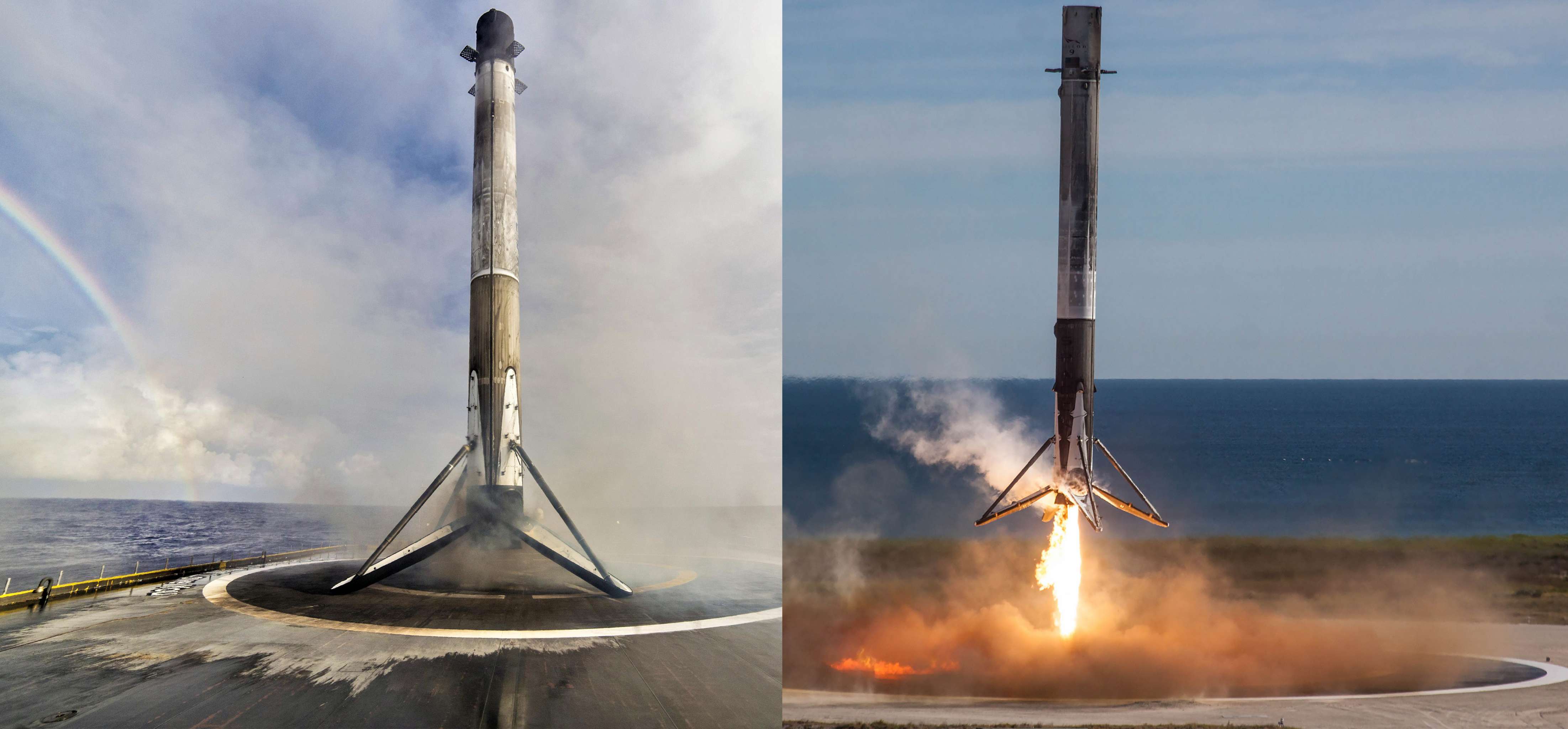

News
SpaceX shifts Falcon 9 booster from landing pad to drone ship after anomaly
SpaceX officially confirmed that it will move the location of a Falcon 9 booster’s post-launch recovery in order to better preserve the site of Crew Dragon’s catastrophic April 20th failure.
Instead of returning the booster to one of SpaceX’s two Cape Canaveral Landing Zones (LZs), SpaceX has applied for an FCC permit to land the rocket less than 20 miles (~30 km) off the coast of Florida on the drone ship Of Course I Still Love You (OCISLY). The culprit for the last-second change of plans is a catastrophic failure of Crew Dragon that spread debris throughout SpaceX’s Landing Zone facilities, debris that will now be critical for the process of anomaly resolution. Landing a Falcon 9 booster at LZ-1 or 2 would invariably spread Crew Dragon’s debris and complicate the failure investigation even further.
Much like a tornado passing through a crime scene would likely hamper the value of that crime scene and any related investigations, a Falcon 9 booster landing at the scene of a fresh accident investigation would be an extremely unwelcome complication. Even with just one Merlin 1D engine firing during a Falcon 9’s landing burn, the engine exhaust departs the nozzle traveling approximately 2.7 km/s (1.7 mi/s) and could easily send Crew Dragon remnants hundreds or even thousands of feet away and incinerate smaller debris. Given that Crew Dragon’s explosion appears to have been highly energetic, many, many pieces will already be spread many hundreds – and perhaps thousands – of feet around the incident.
Crew Dragon is an extremely complex spacecraft. Even the tiniest of fragments could potentially be critical to the successful completion of the explosion investigation, especially if the fault began somewhere in capsule C201’s many hundreds of feet of plumbing. The pipes, valves, and pumps that make up Crew Dragon’s propellant management system have many hundreds (if not thousands) of small parts that must work without issue to safely pressurize and handle the spacecraft’s hypergolic propellant.


Cargo Dragon set for launch
Despite Crew Dragon’s serious failure and the need to change Falcon 9’s booster recovery plans at the last moment, SpaceX still appears to be working to maintain the planned launch date. The instantaneous window is set for 4:22 am ET (08:22 UTC), April 30th, delayed five days from the original April 25th target. Based on an update provided by NASA last week, those delays are the result of International Space Station (ISS) scheduling and additional time needed for payload preparations. Orbital-ATK’s (now “Northrop Grumman Innovation Systems” or NGIS) uncrewed Cygnus spacecraft successfully berthed with the ISS on April 19th, followed by the station’s astronauts unloading the three metric tons of cargo it contained over the next several days.
Once Cygnus operations have been completed, the ISS astronauts will be able to start preparing for Cargo Dragon’s CRS-17 resupply mission, likely carrying another three or four metric tons of pressurized cargo. Although the logistics of unloading, unpacking, and stowing the contents of hundreds of packages of consumables, hardware, tools, science experiments, and more is not exactly thrilling, the reality is that the task takes a surprising amount of time and care. Of the maximum six astronauts aboard the ISS at any given moment, only a few of them are able to focus exclusively on the cargo logistics at the same time as time-sensitive science experiments must be immediately set up to avoid ruining the data produced. Furthermore, although the ISS is truly massive, there are only a handful of berthing and docking ports and the actual habitable volume can be cramped, as are the ports between the station and visiting spacecraft.
An unknown Falcon 9 booster – perhaps B1056 – will perform a routine static fire test at SpaceX Launch Complex 40 (LC-40) five or so days before launch, likely within the next 48 hours. Soon after, Falcon 9 will be mated with CRS-17’s flight-proven Cargo Dragon capsule and expendable trunk before rolling back out to LC-40. If the FCC works fast and grants SpaceX’s updated booster recovery license in the next few days, CRS-17 should remain on track for an April 30th launch.
Check out Teslarati’s Marketplace! We offer Tesla accessories, including for the Tesla Cybertruck and Tesla Model 3.
News
Tesla opens massive solar Supercharger station in California
The Supercharger opened to customers ahead of Fourth of July weekend, while Tesla continues phase two of construction on the site.

Tesla has officially launched the first several Supercharging posts at a massive station in California, notably including solar canopies and grid-scale batteries to offer completely renewable charging.
Last week, Tesla announced on X that it opened the first 84 Supercharger stalls of a planned 168-stall station in Lost Hills, California. Additionally, the massive Supercharger project features 11MW of solar canopies and 10 Megapack batteries for off-grid charging powered entirely by solar energy.
Tesla completed the first phase of the project just days ahead of the busy Fourth of July holiday weekend, adding that initial construction took just eight months. In addition to the remaining charging stalls, Tesla says it’s building a set of lounge areas, renderings of which can be seen below alongside current photos of the site.
Notably, the site also includes V4 charging posts for the company’s latest available charging speeds, and it’s located near the busy junction between I-5 and Highway 46 in Kern County.
“Thank you [Kern County] and [PG&E] for collaboration and approvals,” Tesla wrote in a follow-up post.
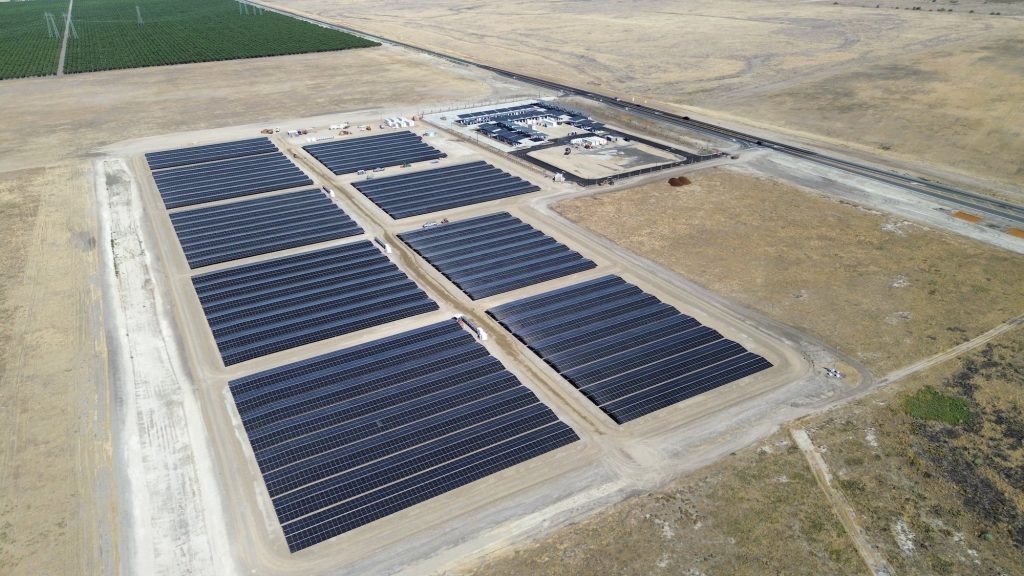
Credit: Tesla Charging | X
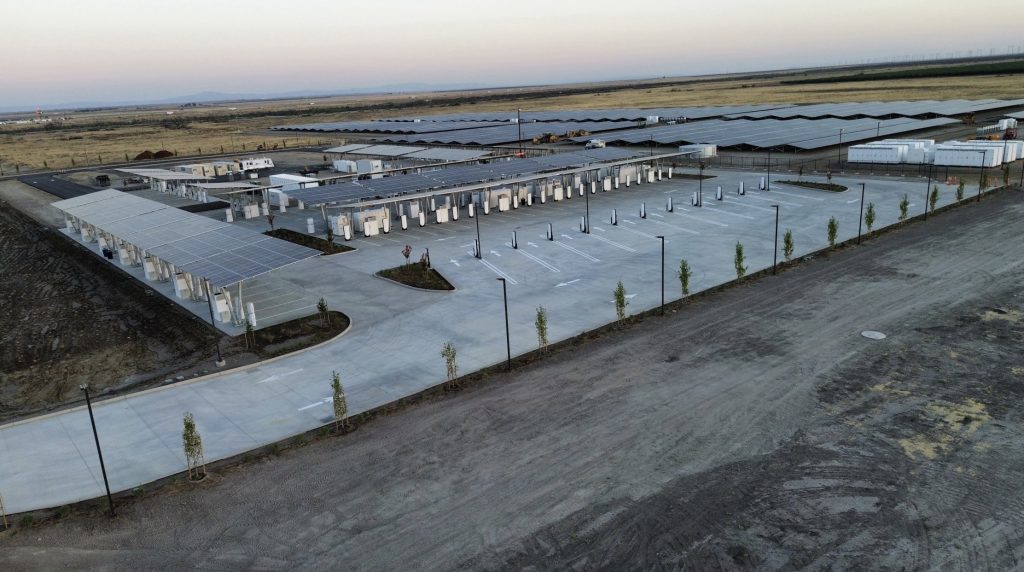
Credit: Tesla Charging | X
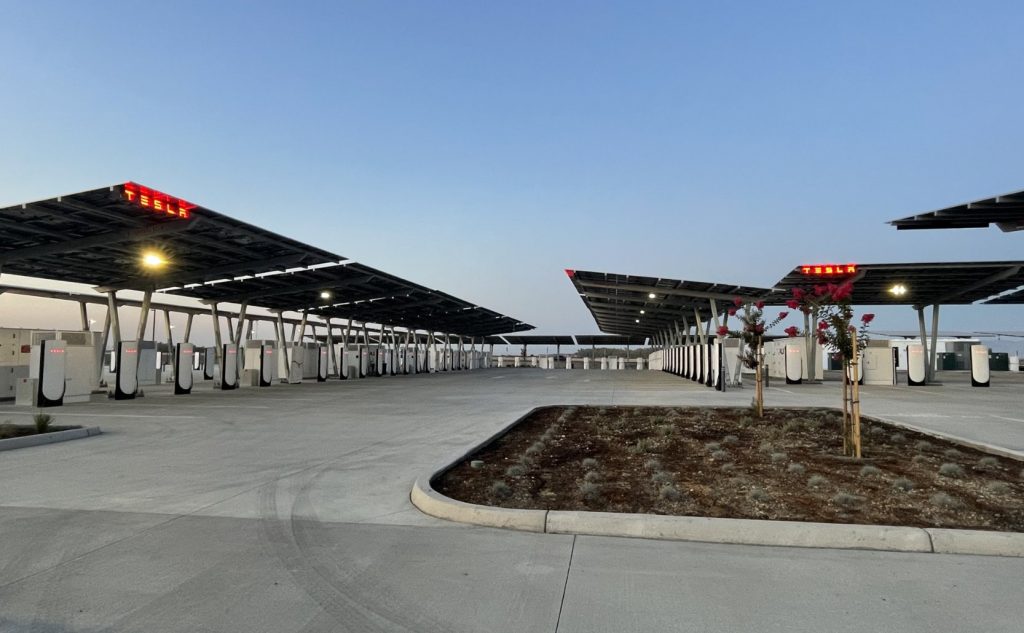
Credit: Tesla Charging | X
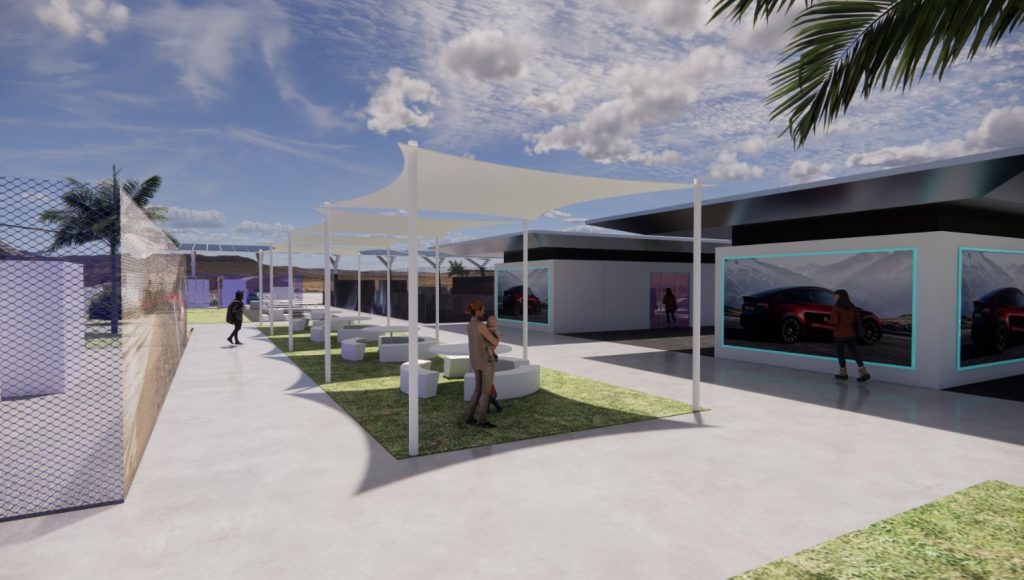
Credit: Tesla Charging | X
Tesla Supercharger Maps for North America, Europe, and Asia pic.twitter.com/0U5r0XRPyo
— TESLARATI (@Teslarati) July 2, 2025
READ MORE ON TESLA SUPERCHARGERS: Tesla launches ultra-fast V4 Superchargers in China for the first time
Testing at the LA Diner, plus Musk update on potential Tesla solar Gigafactory
The huge Tesla Supercharger station completed phase one of construction fairly quickly, especially given how long Tesla has been working on its unique Los Angeles diner, drive-in, and Supercharger location. Still, the company was seen performing some testing at the nearly-completed charging station earlier this month, and will reportedly be holding a job fair.
Elon Musk also responded on Monday morning to a post on X, suggesting that Tesla is “thinking about” building a U.S.-based solar Gigafactory in order to help support increased power needs with AI growth, and to bolster domestic solar production.
Tesla is building a new UFO-inspired Supercharger in the heart of Alien country
News
Tesla driver walks away from major accident with minor injuries
The driver sustained only minor injuries, and the exact cause of the crash remains under investigation.
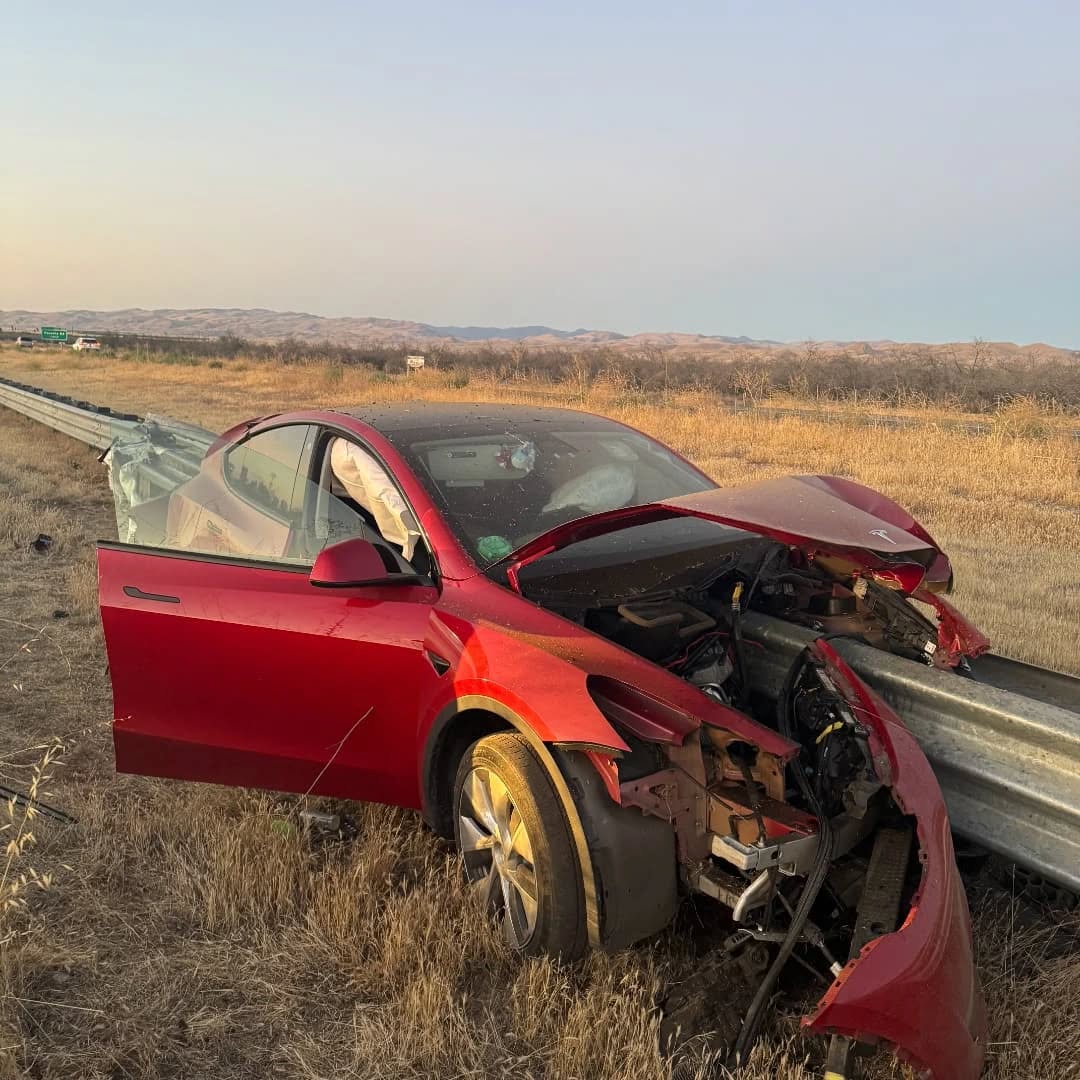
The driver of a Tesla Model Y survived and walked away from a harrowing accident on Monday in California, only sustaining minor injuries despite the vehicle being impaled by a guardrail.
On Monday morning around 4:34 a.m., the Los Banos division of the California Highway Patrol (CHP) responded to the accident on I-5 near Panoche Road, involving a 23-year-old in a Tesla Model Y. According to a post on social media, the driver veered off the road for unknown reasons in the northbound lane, before crashing directly into the guardrail and impaling the vehicle.
You can read the full message and photos from Los Banos CHP below, as were shared in a Facebook post on Monday afternoon.
This morning a Tesla model y was traveling in the #1 northbound lane of I-5 north of Panoche Rd. For unknown reasons driver allowed V-1 to veer off the roadway, travel through a dirt center divide, and crashed into the fixed metal guardrail. Lucky for the driver he only sustained minor injuries and was able to walk away. Driving a vehicle requires 100% attention to the road. Avoid distractions and focus on driving.

Credit: CHP Los Banos (via Facebook)
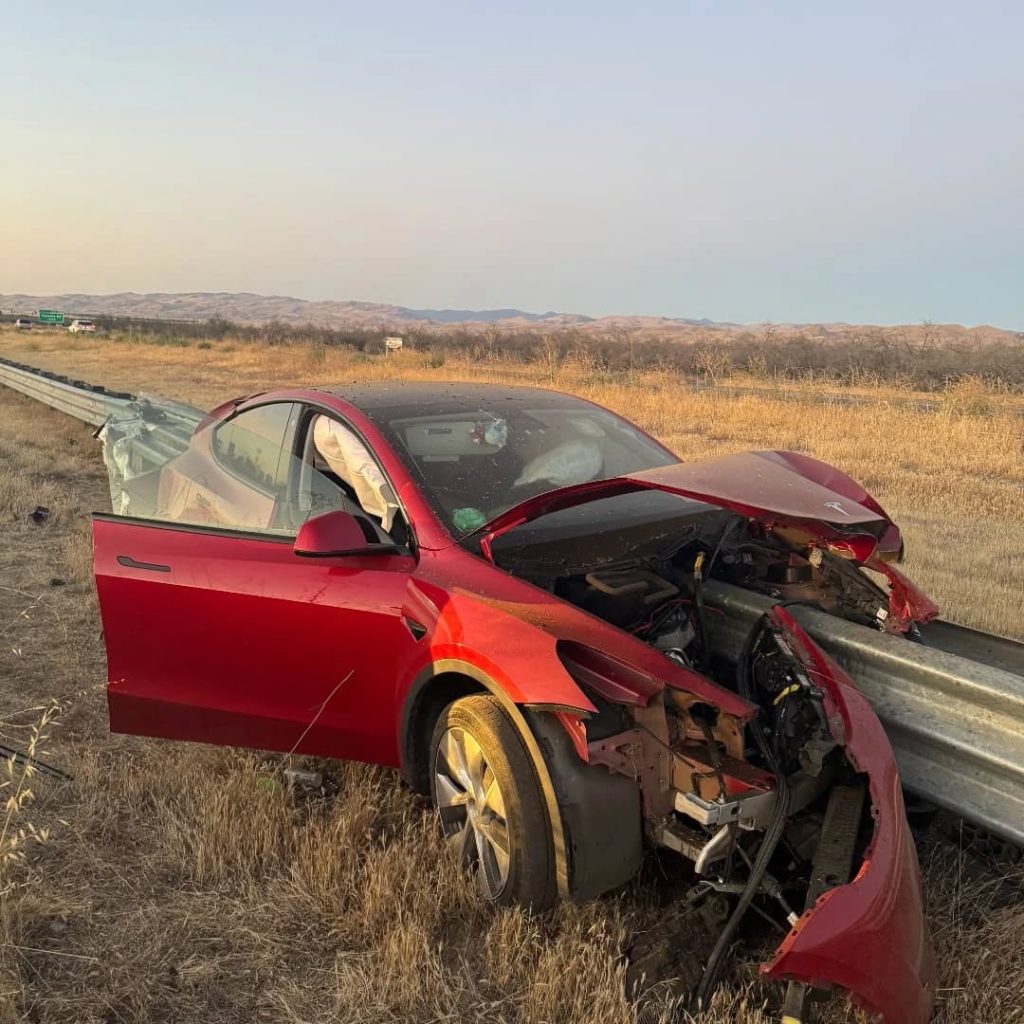
Credit: CHP Los Banos (via Facebook)

Credit: CHP Los Banos (via Facebook)
In a statement to SFGate, CHP officer Myles Anderson said that the driver only sustained minor injuries, while no arrests are made and drugs and alcohol are not suspected to have been involved. The report also notes that Tesla’s “cruise control and lane assistance features” were activated, according to Anderson. However, it’s not entirely clear if this is referring to Supervised Full Self-Driving (FSD), or to the cruise control and lane assist features baked into Autopilot.
At the time of writing, CHP has not yet responded to Teslarati’s request for clarification and additional details on the matter.
Tesla Crash Safety Ratings across its lineup: pic.twitter.com/ny30R7ceji
— TESLARATI (@Teslarati) July 1, 2025
READ MORE ON TESLA SAFETY: Tesla rolls out crucial new safety feature aimed at saving children
The news comes after Tesla has touted its vehicles as incredibly safe for many years. In December, for example, the company highlighted receiving top safety scores from regulators on four different continents throughout the world, including from the National Highway Traffic Safety Administration (NHTSA) and the Insurance Institute of Highway Safety (IIHS) in the U.S.
Tesla has also listed the goal of making its vehicles the safest on the road throughout the years, both in the overall design of its vehicles and in its Autopilot and Full Self-Driving (FSD) programs.
Tesla Model 3 ranks as the safest new car in Europe for 2025, per Euro NCAP tests
Investor's Corner
Cantor Fitzgerald maintains Tesla (TSLA) ‘Overweight’ rating amid Q2 2025 deliveries
Cantor Fitzgerald is holding firm on its bullish stance for the electric vehicle maker.
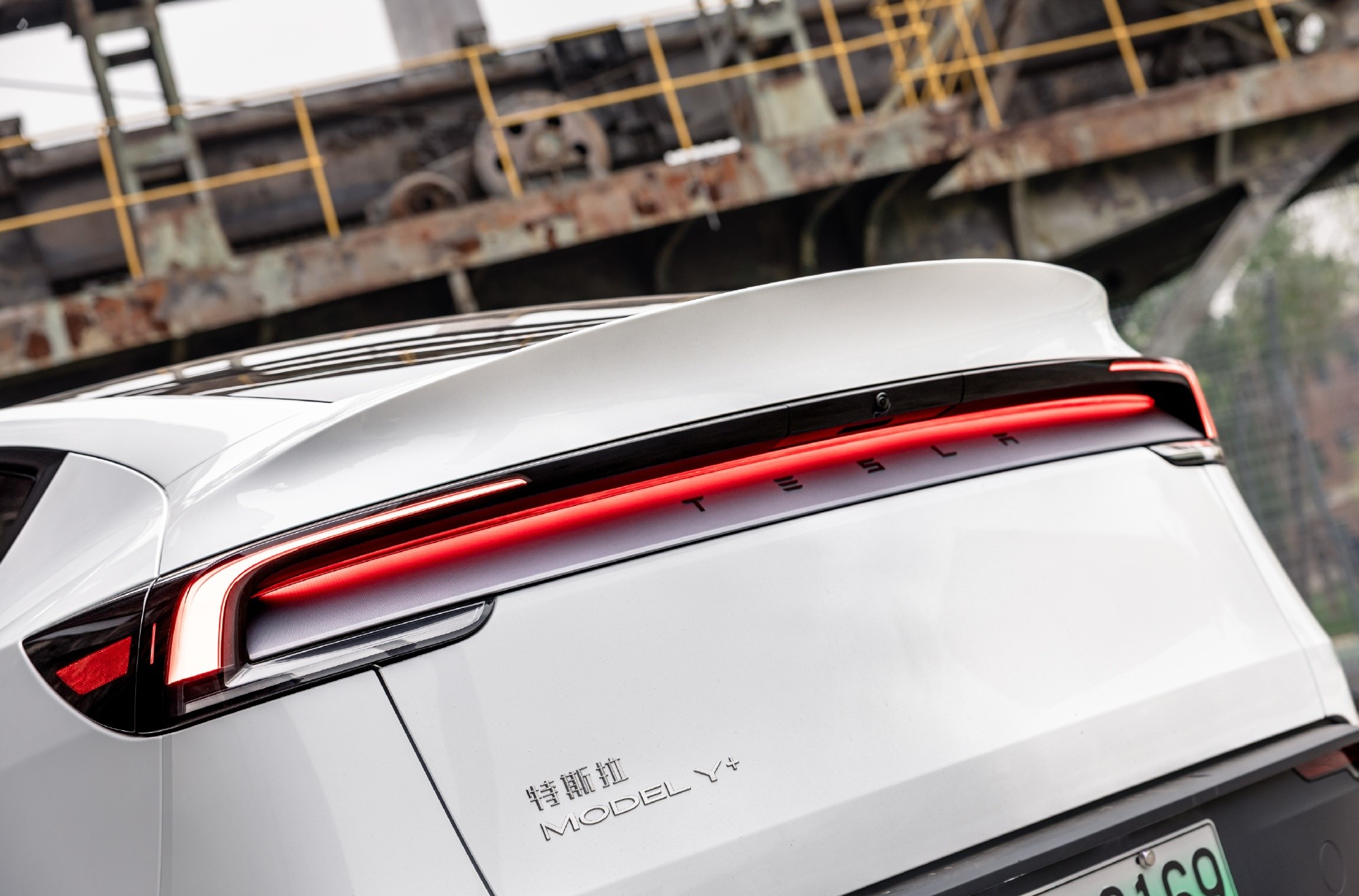
Cantor Fitzgerald is holding firm on its bullish stance for Tesla (NASDAQ: TSLA), reiterating its “Overweight” rating and $355 price target amidst the company’s release of its Q2 2025 vehicle delivery and production report.
Tesla delivered 384,122 vehicles in Q2 2025, falling below last year’s Q2 figure of 443,956 units. Despite softer demand in some countries in Europe and ongoing controversies surrounding CEO Elon Musk, the firm maintained its view that Tesla is a long-term growth story in the EV sector.
Tesla’s Q2 results
Among the 384,122 vehicles that Tesla delivered in the second quarter, 373,728 were Model 3 and Model Y. The remaining 10,394 units were attributed to the Model S, Model X, and Cybertruck. Production was largely flat year-over-year at 410,244 units.
In the energy division, Tesla deployed 9.6 GWh of energy storage in Q2, which was above last year’s 9.4 GWh. Overall, Tesla continues to hold a strong position with $95.7 billion in trailing twelve-month revenue and a 17.7% gross margin, as noted in a report from Investing.com.
Tesla’s stock is still volatile
Tesla’s market cap fell to $941 billion on Monday amid volatility that was likely caused in no small part by CEO Elon Musk’s political posts on X over the weekend. Musk has announced that he is forming the America Party to serve as a third option for voters in the United States, a decision that has earned the ire of U.S. President Donald Trump.
Despite Musk’s controversial nature, some analysts remain bullish on TSLA stock. Apart from Cantor Fitzgerald, Canaccord Genuity also reiterated its “Buy” rating on Tesla shares, with the firm highlighting the company’s positive Q2 vehicle deliveries, which exceeded its expectations by 24,000 units. Cannacord also noted that Tesla remains strong in several markets despite its year-over-year decline in deliveries.
-

 Elon Musk1 week ago
Elon Musk1 week agoTesla investors will be shocked by Jim Cramer’s latest assessment
-

 News2 weeks ago
News2 weeks agoTesla Robotaxi’s biggest challenge seems to be this one thing
-

 News2 weeks ago
News2 weeks agoWatch the first true Tesla Robotaxi intervention by safety monitor
-

 Elon Musk1 week ago
Elon Musk1 week agoA Tesla just delivered itself to a customer autonomously, Elon Musk confirms
-

 News2 weeks ago
News2 weeks agoTesla Robotaxi rollout proves that Elon Musk still delivers, even if it’s late
-

 Elon Musk2 weeks ago
Elon Musk2 weeks agoElon Musk confirms Tesla Optimus V3 already uses Grok voice AI
-

 Elon Musk2 weeks ago
Elon Musk2 weeks agoxAI welcomes Memphis pollution results, environmental groups push back
-
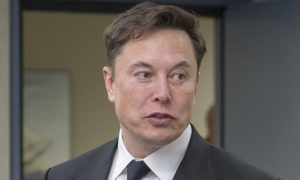
 Elon Musk2 weeks ago
Elon Musk2 weeks agoElon Musk commends Tesla team on successful Robotaxi launch


















